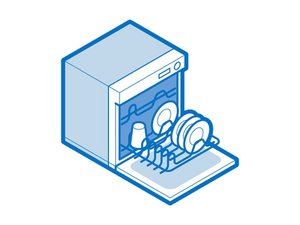Whirlpool Gold not using water after soap is dispensed
I have the WDF760SADM2 and it sometimes runs any cycle normally with no problem.
But often (with increasing frequency) it runs the cycle but doesn’t use any water after dumping the soap. At the end of the 2.5 hours (or whatever the normal cycle time is) the soap still lays in the bottom. If it wasn’t for the soap and mostly dirty dishes, there would be no indication the cycle was faulty. It runs the time down like it normally does.
This happens in all programs (sensor, normal, heavy 1-hour etc.)
Now that I pay attention I also hear that there is no water sloshing around. I also hear (a relay?) clicking, like it wants to start the pump or something. (but i’m not sure if it also clicks when it actually washes with water). I then open the door and see it steaming (I assume from the pre-wash before it opens the soap door) and the soap at the bottom and no water flowing. I then close the door and hit resume. SOMETIMES it then start using water. but sometimes i have to cancel, unplug the dishwasher and start over. Sometimes it works then (like with actually using water for the full 2.5 hours).
I made it a habit to unplug power for a minute before starting, which seemed to help. but not all the time.
Once the washer works, it works perfectly. If i open the door, i can tell that it is showering the dishes and hear the water sloshing around and the soap is dissolved and the dishes are clean.
No error codes. I also tested the soap dispenser door (that was my first guess thinking the door opens very late in the cycle). I also cleaned what I could.
Whirlpool Dishwasher stops after filling with water with similar symptoms, making it look like it could be the door latch ($18) or the pump-assembly ($150). But it also could be the door being bent and not making the lach switch close.
Is there a way to narrow down what it could be? If it is the latch switch, I wonder why the washer runs the cycle like it has water (i have the suspicion the heater also works, since it is steamy). I could measure wash motor resistance - the manual talks about 5-15 Ohm. but if the motor is bad, why would it work sometimes?
- rinse (with soap door closed) for about 5 minutes
- open the soap door
- wash with water
- probably a rinse cycle
The problem here it runs the normal sequence, but doesn’t use any water for 3. and 4.
I wanna take it apart more, but if someone could tell me what to look for or what to measure, that would be great.
Other suspects are the water valve (unlikely, since water always fails at the same time) or the control board.
Ist dies eine gute Frage?


 2
2  1
1 
 32
32 